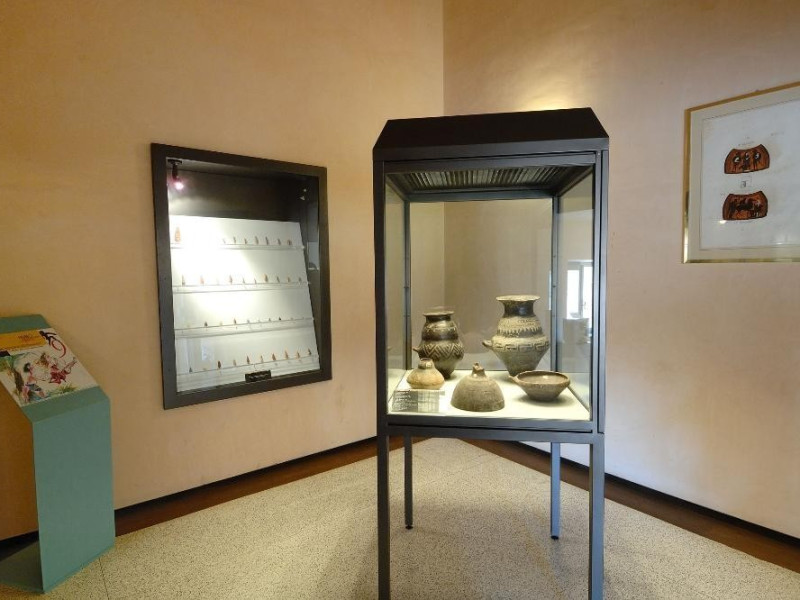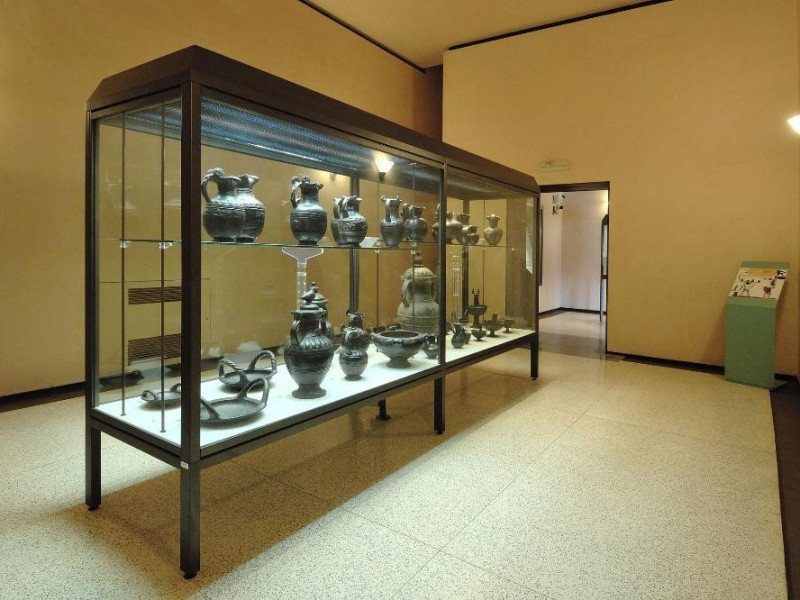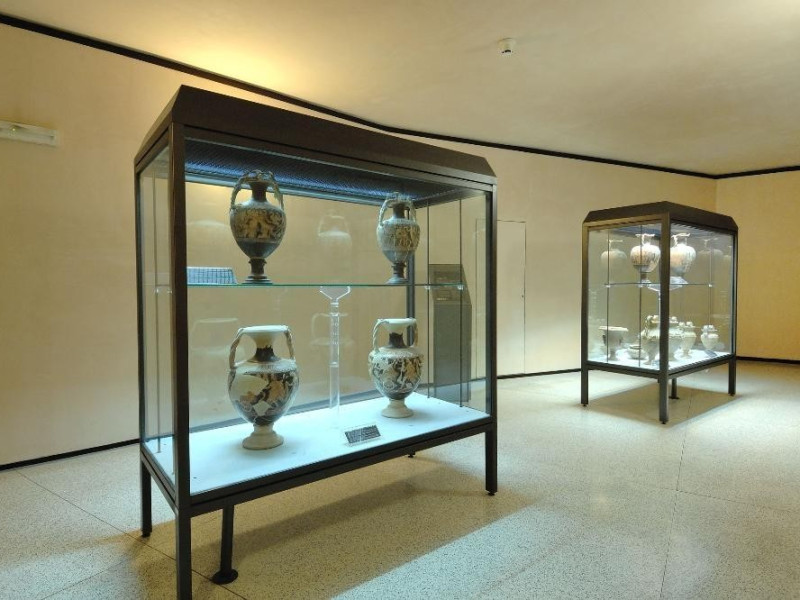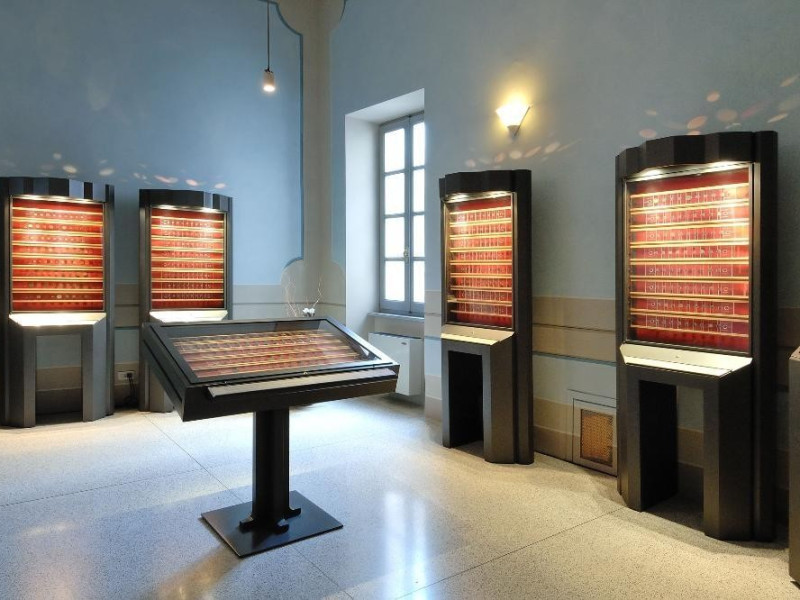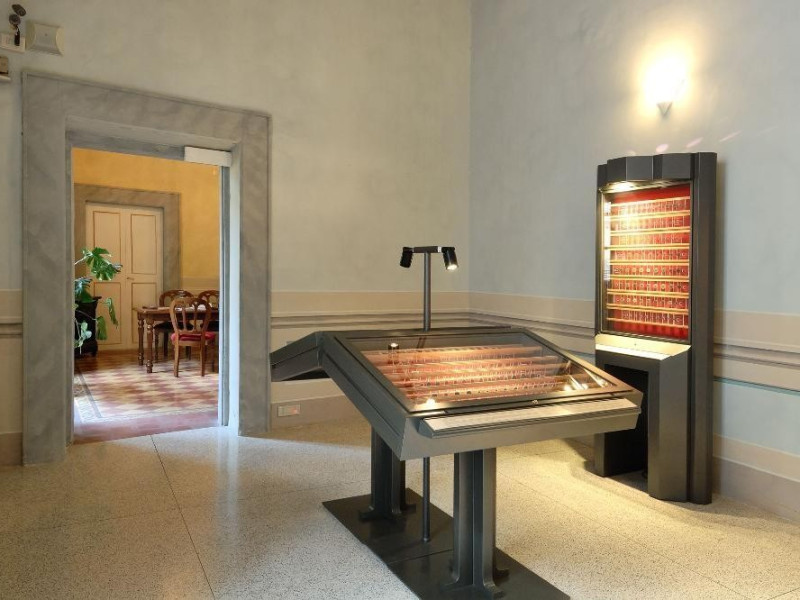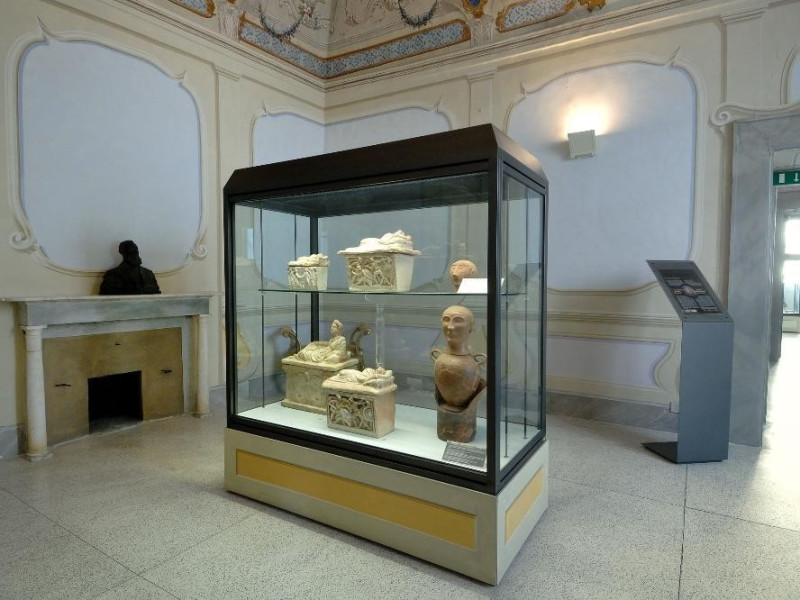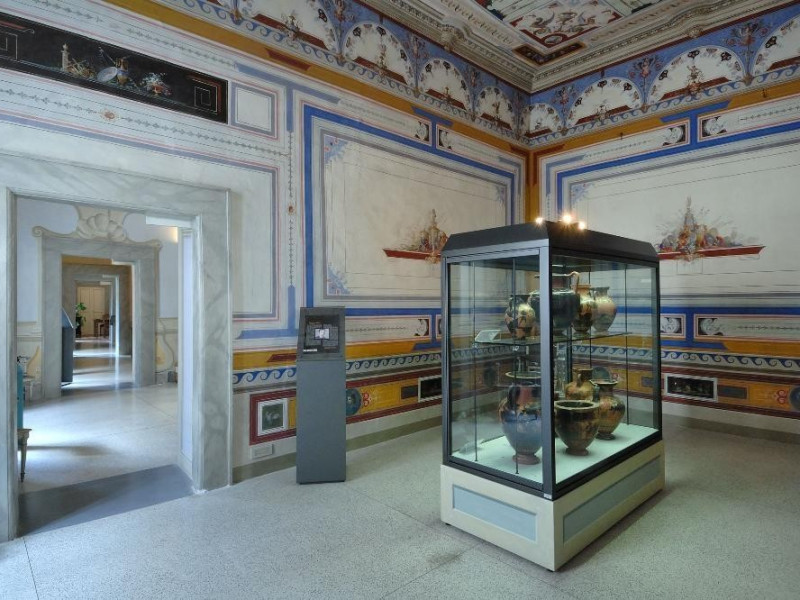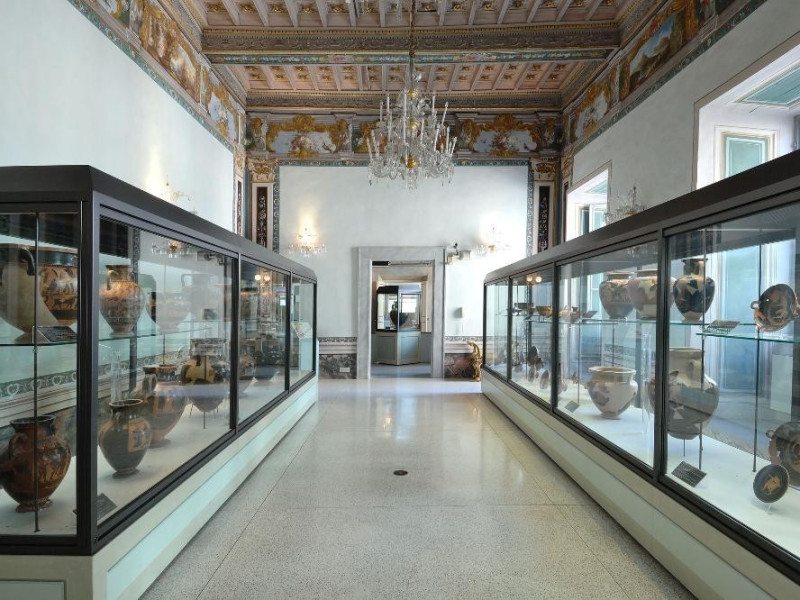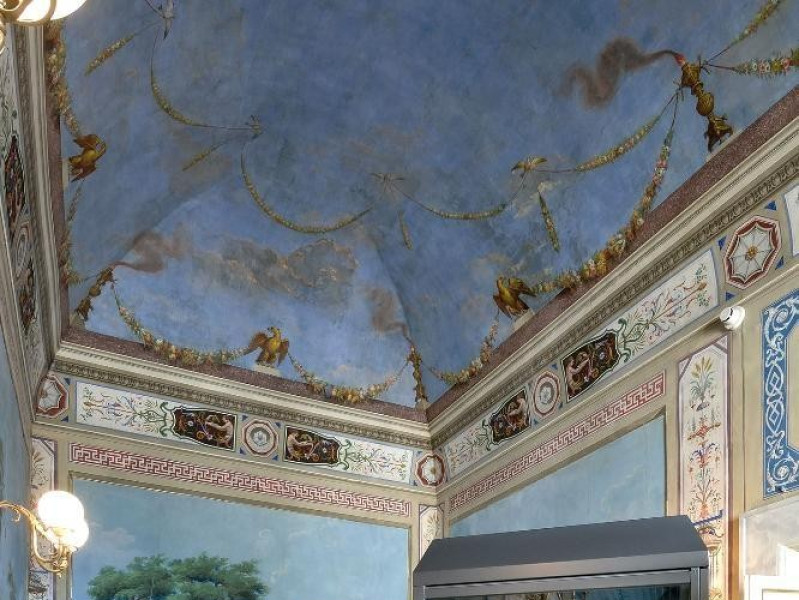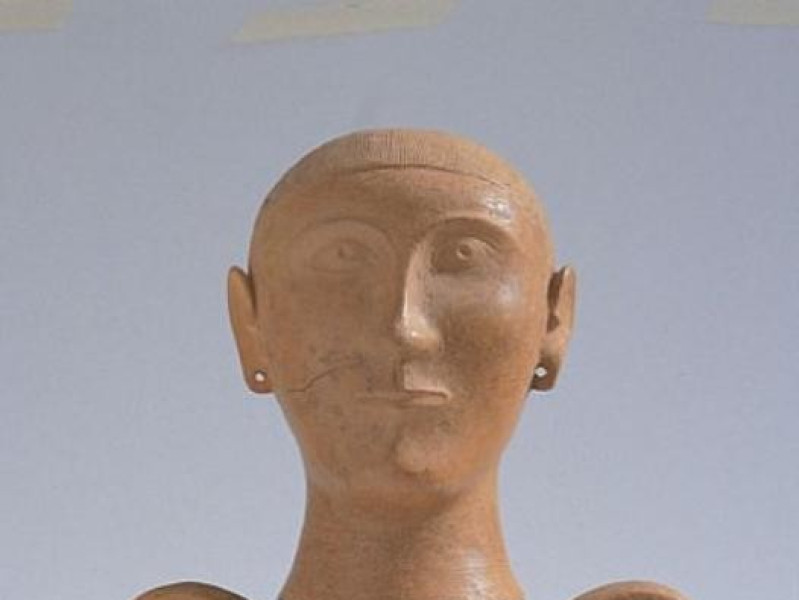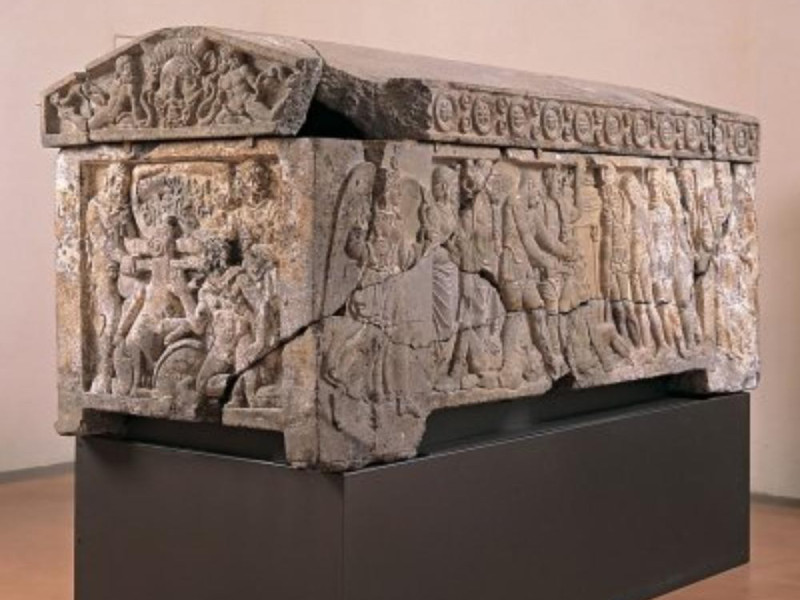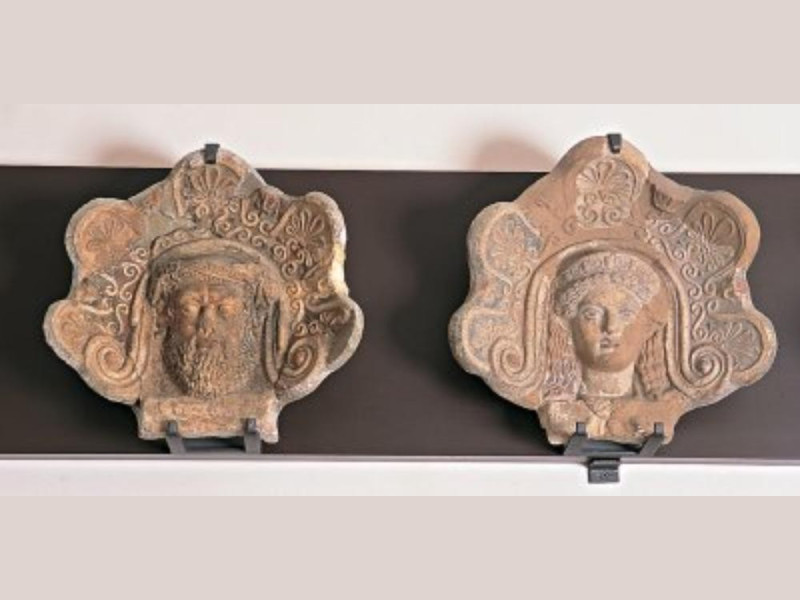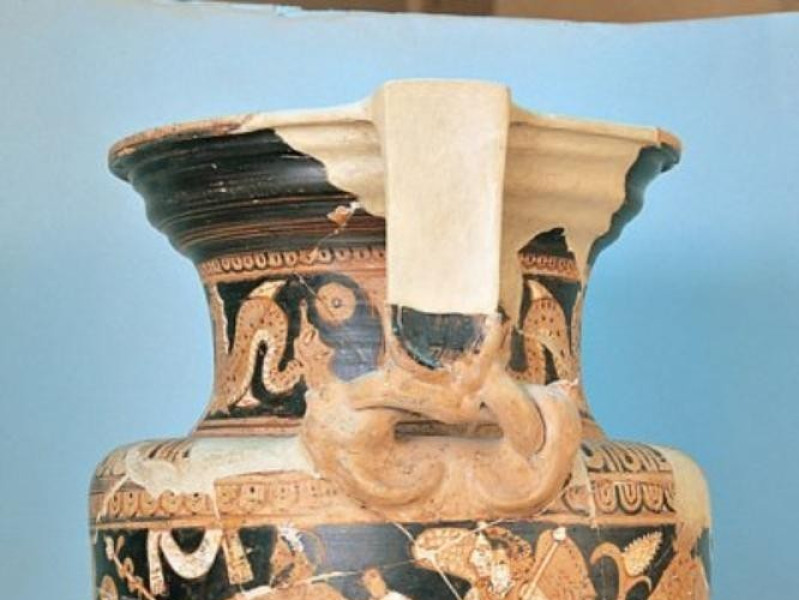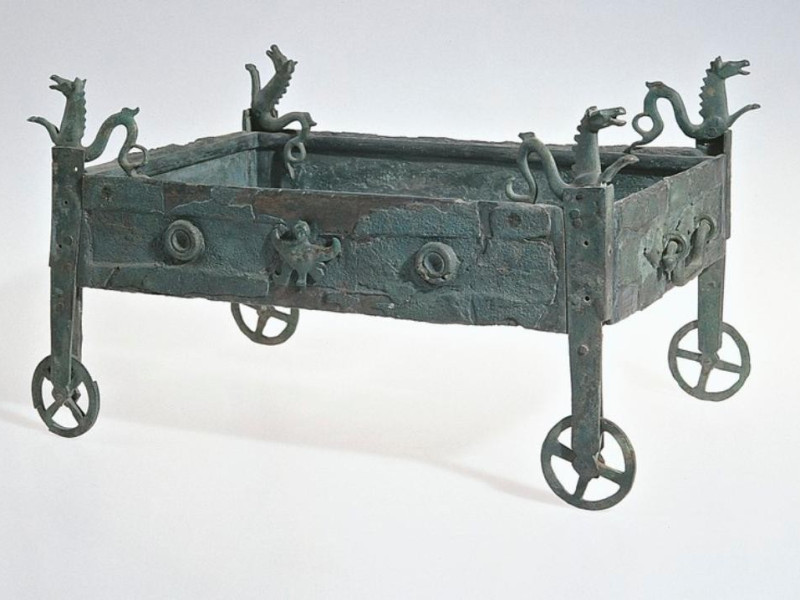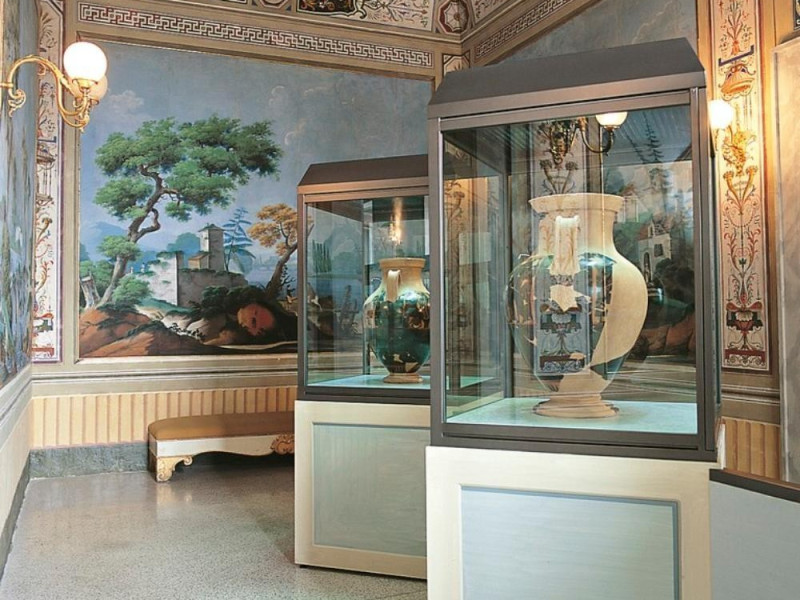Luogo - Museum
Museo "Claudio Faina" e Museo civico
Where
Piazza del Duomo, 29, Orvieto (Terni)
Claudio Faina Museum and Civic Archaeological Museum
The Museo Claudio Faina and the Museo Civico Archeologico are hosted inside Palazzo Faina, located in Piazza Duomo, in Orvieto.
The place was built in the mid 1800s over the old structure of the house of the Monaldeschi, a 13th century family that was among the wealthiest in Orvieto. In the 19th century Count Claudio Faina Senior acquired the palace, and moved his private family art collection—previously kept in his residence of Perugia—there. The building became the seat of the Museum in 1954, when Claudio Junior, the last heir, left all his properties to Orvieto Municipality to finance the Claudio Faina Museum Foundation in his will, and it has remained there ever since.
The exhibition arrangement aims at illustrating the steps of the gathering of the collection, from the
constitution of the original nucleus starting in 1864, by Count Mario, collected following the indications required by collectors of the time, up to its enrichment by Eugenio, Mario’s heir, who limited the acquisition of the finds to the Orvieto area, and promoted the formation of a Civic Museum rather than enriching the family collection.
From the gallery, located on the second floor of the palace, it is possible to admire a view of the Duomo from a particular perspective. The access to the Civic Archaeological Museum is in Piazza Duomo. It is housed on the ground floor of the palace and is entirely dedicated to the finds coming from the local excavation sites of Orvieto and its territory, which testify to the exceptional flourishing of Volsinii—the Etruscan town of Orvieto.
The architectural terracotta finds exhibited from the Belvedere area come from production of the finest artistic quality, executed in the course of the 5th century B.C. by Volsinii’s workshops. They are inspired by Classical Ancient Greek Art, and are what is left of the decorative apparatus and marble coated buildings of worship.
From the sacred area of Cannicella—its name comes from reeds, a perennial grass growing profusely in the area—a sanctuary identified inside the necropolis located to the south of the town, comes the célèbre sculpture of Venus, and from the Crocefisso del Tufo—The Tuff ’s Cross—necropolis located to the north, some funerary slabs with the inscription of the deceased and stones—cippi—are exhibited.
From the territory of Orvieto, some materials collected in the course of the 19th century are illustrated. Among these, the Torre di San Severo Sarcophagus, with its sculpted scenes depicting mediated episodes of the Greek Mythology of funerary inspiration, stands out.
The Claudio Faina Collection is arranged on the first floor—the Piano Nobile—and on the second floor of the palace, in a renewed arrangement set up in 1996. On the Piano Nobile, which preserves the 19th century decorations, the finds recovered by Faina are arranged highlighting especially the collecting activity of Mauro, in particular his numismatic collection, consisting of coins mainly from the Roman, Republican and Imperial periods. They are displayed in rigorous chronological order.
On the second floor, the finds are arranged following a typological and chronological order: from the Pre-
Prehistoric materials to the Attic ceramics, while some rooms are entirely dedicated to Etruscan ceramics.

